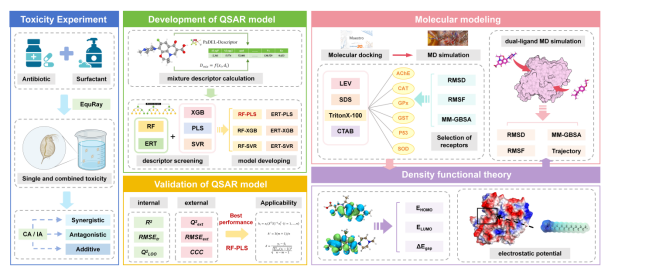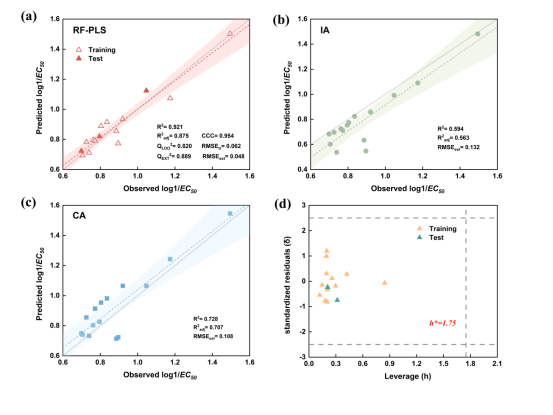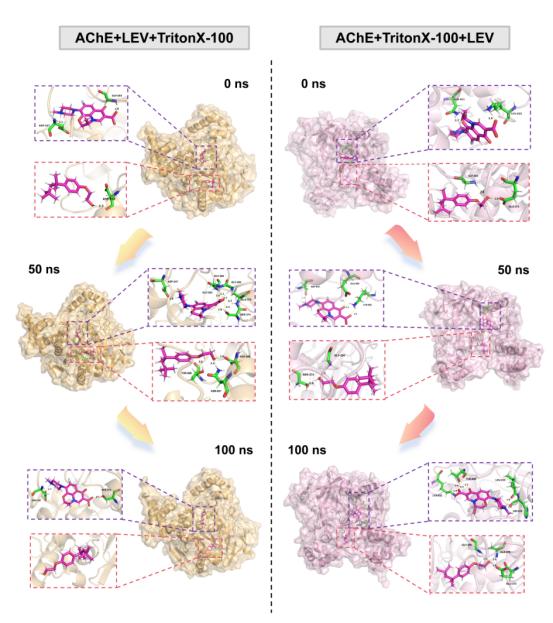
Paper DOI: 10.1016/j.jhazmat.2025.137390
Research Highlights
Recently, Zheng Ziyi, a 2022 master’s student at the School of Urban Planning and Design, Peking University, published a research paper titled “Prediction and mechanism of combined toxicity of surfactants and antibiotics in aquatic environment based on in silico method” in the renowned academic journal Journal of Hazardous Materials (Impact Factor: 12.2). Combining experimental and computational approaches, the study reveals the joint toxic effects and mechanisms of antibiotic-surfactant mixtures on Daphnia magna, providing critical theoretical foundations and tools for predicting environmental risks of co-existing pollutants in aquatic ecosystems.

Figure 1: Graphical Abstract
Research Background
The rapid growth of antibiotic production, driven by increasing demand and the synthesis of novel antibiotics, has led to significant antibiotic residues entering aquatic environments via agricultural runoff and sludge treatment. These residues persist in water bodies, posing threats to aquatic life. Concurrently, approximately 60% of surfactants—ubiquitous in daily life and industrial processes—enter aquatic systems. Their coexistence with antibiotics may alter the biological toxicity of pollutants, necessitating urgent investigation into their combined effects. This study employs quantitative structure-activity relationship (QSAR) modeling, molecular dynamics (MD) simulations, and density functional theory (DFT) calculations to explore the molecular mechanisms of surfactant-antibiotic mixtures’ toxicity on aquatic organisms, uncovering their ecological risks and advancing methodologies for assessing combined pollutant toxicity.

Figure 2: Framework for Investigating Combined Toxicity Mechanisms
Key Innovations
Developed a QSAR model for predicting the combined toxicity of antibiotics and surfactants.
Identified acetylcholinesterase (AChE) as the optimal receptor for joint toxicity through molecular modeling.
Revealed that electrostatic potential and binding affinity drive combined toxicity.
Demonstrated that LEV/Triton X-100 binding to the same AChE active site induces synergistic effects.
Discovered that conformational changes in AChE-complexes impair enzyme activity and catalysis.
Major Findings
QSAR Model Development and Validation
Experimental results showed synergistic toxicity between LEV and Triton X-100. Six QSAR models were developed, with the Random Forest-Partial Least Squares (RF-PLS) model exhibiting superior performance (training set R² = 0.921). Critical molecular descriptors (e.g., RDF155i#3, MATS3e#2) were identified, enabling robust prediction of toxicity across mixture ratios.

Figure 3: Applicability Domain of the RF-PLS Model and Comparison with Conventional Models
Mechanisms of Individual Toxicity
MD simulations revealed that LEV and Triton X-100 form stable hydrogen bonds and hydrophobic interactions with AChE’s active site, altering its conformation and catalytic function. LEV binding was driven by electrostatic and polar solvation forces, while Triton X-100 relied on van der Waals and hydrophobic interactions. Charge distribution similarities between LEV and Triton X-100 explained their synergistic binding to AChE.

Figure 4: Binding Stability of AChE-Ligand Complexes
Synergistic Mechanisms of Combined Toxicity
Dual-ligand MD simulations confirmed LEV/Triton X-100 synergy. Co-binding induced conformational shifts in AChE, enhancing complex stability and toxicity. This synergy stems from shared binding modes and strong interactions at the active site—a factor overlooked in traditional toxicity models.

Figure 5: Dual-Ligand MD Simulation of Synergistic Effects
Conclusions
The integration of QSAR, MD, and DFT offers novel insights into predicting and deciphering the combined toxicity of surfactant-antibiotic mixtures. The study underscores that co-existing surfactants and antibiotics may trigger unexpected toxic effects, demanding heightened attention in ecological risk assessments. The LEV/Triton X-100 synergy highlights the urgent need to address complex pollutant interactions in aquatic environments, which advances risk management and regulatory approaches for combined pollutant impacts.
Text and Images: Ziyi Zheng
Reviewed by: Honggang Ni